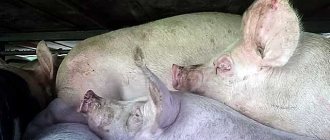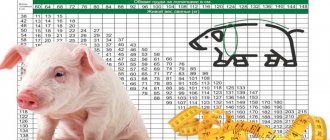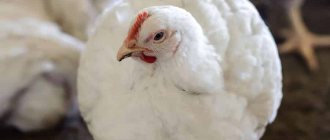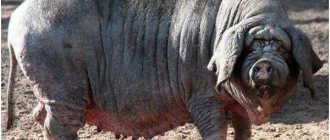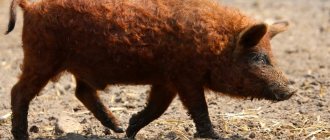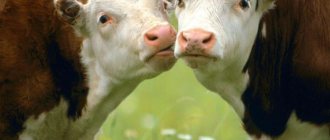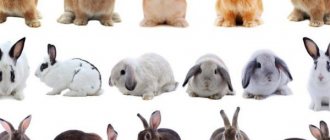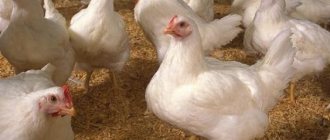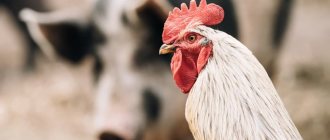The birthplace of pot-bellied piglets is Vietnam. They first appeared in Eastern Europe and Canada in 1985, and a few years later the breed spread throughout Europe and Asia. The breeding of pot-bellied piglets of the Vietnamese breed is especially active in Hungary and Ukraine. Pigs are compact in size and have an amazingly flexible character. These animals break all stereotypes about pigs as dirty people, they are so clean and tidy.
Vietnamese potbellies have found their niche among companion animals. They are distinguished by their ability to socialize, have a good disposition, actively show emotions and are attached to their owner.
Since the main factor in favor of industrial breeding of the breed is productivity, the Vietnamese have succeeded here too. They quickly gain weight, and the slaughter yield is 75%. Pot-bellied meat is valued for its delicate texture and excellent taste. With careful care and proper organization of feeding, cultivation will bring good profits without significant investments.
Description of the breed
Vietnamese piglets are very different from other pigs; it is simply impossible to confuse them with other representatives of the porciniformes order.
The description of Vietnamese pot-bellied piglets contains a number of unique characteristics:
- Relatively small head with a distinct pug-like appearance. Boars that have reached puberty begin to grow fangs, the length of which reaches 15 cm. Often representatives of the breed have an incorrect bite.
- Large belly hanging down to the ground in gilts and adult sows.
- Mohawk-like stubble. The longest hairs (about 20 cm) are located from the neck to the croup. When the pot-bellied ones are angry or, on the contrary, experiencing joy, the bristles rise, forming a tousled crest above the head.
- Black or black and white color. White spots are observed near the hooves and on the head. In rare cases, striped pigs appear, similar in color to wild boars, but this color is considered uncharacteristic.
- Exterior characteristic of bacon pigs: wide body, voluminous chest, squat body.
Asian pigs grow large: females weigh 100-120 kg, boars - about 140-200 kg. Animals are slaughtered when they reach 80 kg. Weight approximately corresponds to age 9-10 months. By this time, the thickness of the subcutaneous fat reaches up to 35 mm (provided that meat and fat fattening is used).
Animals have stable immunity.
The breed is not included in the State Register of Breeding Achievements of the Russian Federation.
Walking area arrangement
Raising Vietnamese breed pigs requires creating opportunities for the animals to walk during the warm season. To do this, you will need to allocate an area of 1 acre per 1 grown individual for them.
An exercise yard must be specially arranged for pot-bellied animals:
- You need to bury 1-3 logs in the soil, on which the pigs can scratch their backs;
- Create a shelter to protect pigs from the merciless sun and rain;
- Animals will really enjoy having a mud pool as they enjoy taking a dip in mud baths. Such a pool will help the pigs get rid of clingy and blood-sucking insects, and will also cool them down during the summer heat.
Meat quality
Asian pigs are the owners of marbled meat, in which layers of muscle tissue are interspersed with thin layers of fat. According to reviews, the meat of pot-bellied pigs has a pleasant, rich taste. In young piglets it is light pink, in older animals it is intense pink.
In piglets, the meat has a dense structure, and when it reaches 6-7 months, when the pig begins to become overgrown with lard, the meat becomes marbling.
In uncastrated wild boars and whips, the muscle tissue has an unpleasant odor due to the increased testosterone content. This is especially evident during heat treatment.
Vietnamese meat is in great demand because it contains 10 times less cholesterol than other breeds of pigs.
Care
After giving birth, especially the first, it is worth paying attention to the pig and helping it adapt after birth, and the piglets to a new life
Behind the sow
One of the basic rules for the fastest recovery and increase in milk volumes is high-calorie, vitamin-rich food and in large volumes. But the first dish after childbirth is a thin mash of milk and oatmeal.
Make the pig stand up and walk around the pen; if she doesn’t want to and lies down all the time, call the vet. After 5 days, take her outside to ease her postpartum condition.
For the piglets
Absolutely everyone, Vietnamese piglets and ordinary ones, perfectly healthy, suffer from anemia, that is, the body of newborns initially lacks iron and copper. Main features:
- the piglets are freezing;
- eat poorly and are developmentally delayed;
- in difficult cases there is an increase in temperature with a rapidly developing fever.
After the first week on mother's milk, the piglets begin to be introduced to chalk, clay, then little by little feed and drinking water. After 2 weeks, the cubs are ready to fully eat adult food. You can find out what to feed piglets at this link.
Weak newborns are force-fed from a bottle and try to keep the room temperature constant above 30°C.
Weak piglets must be bottle-fed additionally.
How to care
You can replenish the potbelly population in one of the following ways:
- mating sexually mature individuals from the available artiodactyls;
- acquiring young animals.
If there are adult females and boars in the herd, breeding them to produce offspring will not be difficult. The breed is early maturing. Pigs reach puberty at 4 months, weighing 30-35 kg, and boars at the age of 5-6 months, weighing about 40 kg. In the first farrowing, sows bring up to 6 piglets, and in subsequent farrows - up to 18.
In private farms, 1 boar fertilizes 15-20 pigs. In this case, the manufacturer is considered sexually mature after reaching 12-18 months and weighing 150-200 kg. The offspring of a boar of this age will be larger and more viable than those of a younger male. One pig can breed several boars within 12 hours, then there will be more piglets in the litter.
The waiting period for an offspring from a sow is 114-118 days. Farrowing usually proceeds without problems. The procedure lasts 3-5 hours, and the only thing the owner needs to do is clean the area where the sow is kept and cover the floor with fresh straw. After farrowing, the placenta must be destroyed immediately.
What do experts advise?
Nutritional supplements in the diet of piglets
- Some breeders are wondering what to feed Vietnamese piglets so that they gain weight quickly? In this case, professional farmers recommend food additives that increase the nutritional value of the feed, rather than its calorie content. Such supplements can be purchased at various pet stores. But it is better to give preference to good brands that are not cheap - over time the price will more than pay off.
- Vietnamese pigs can be picky when choosing food, and this also applies to piglets. Therefore, in order for them to actively gain weight, they need high-quality, nutritious food.
- Part of a proper diet is frequent walking during warm seasons. Young animals should walk, eat hay and grass outside on their own, and at the same time lose excess fat. If you fatten them up and don’t let them move, this will lead to obesity.
- Some farmers include oats and corn in the diet of piglets. It’s not that this is wrong, it’s just that there is no nutritional value from these crops for pigs. It’s better to buy more inexpensive rye or eggplant - they will at least pay for themselves, than to feed Vietnamese piglets “empty” food.
- Vietnamese pigs, with an abundance of food, increase the volume of lard, not meat. Therefore, piglets should not be overfed, especially with low-quality feed. This will only lead to obesity and will not provide any benefit or meat gain. Yes, the live weight will be greatly increased, but this will be of little use.
Sources:
https://fermhelp.ru/vetnamskie-porosyata-ves-po-mesyacam-normy-massy-tela-v-raznom-vozraste/ https://ruda4nik.ru/1305-chem-kak-i-skolko-raz- kormit-vetnamskikh-porosyat-v-domashnikh-usloviyakh.html https://fermerok.info/chem-kormit-vetnamskih-porosyat
Content
Newborn Vietnamese piglets are born defenseless and vulnerable: they have no fat layer, no stubble, and if the air temperature in the barn is below +25-30°C, additional heating sources should be installed.
For keeping Asian pigs, the optimal temperature is +20°C. In order not to spend money on installing and using artificial heat sources, it is necessary to carefully caulk the walls of the pigsty, seal the cracks in the floor and prevent drafts.
During the first days, Vietnamese piglets are cared for by the sow herself. Animal instinct tells newborns that they should be applied to the nipples every 30-40 minutes. The farmer's help is required only if the pig's teats are not enough for all the piglets. Then a trough-shaped feeder is equipped with holes into which bottles are inserted. The milk should be warm - up to +38°C. To maintain the temperature in the bottle, hot water is poured into the trough.
A worthy replacement for pig milk is cow's or goat's milk. In the first 3 days, 1 piglet produces up to 30 g of milk, in the subsequent days - 50-70 g.
When bottle-fed, vitamins A and D are added to the milk.
Despite the ease of caring for Vietnamese pot-bellied piglets, overeating is a common problem. The main symptom is the appearance of diarrhea, and rice water will help cope with this.
Thanks to the nutritious milk of the sow, the piglets quickly grow stronger and from the 10th day of life they begin to get acquainted with adult feed.
Choosing a habitat
Keeping Vietnamese pigs is not a big deal. Due to their small size, pigs do not need a giant pigsty. It is better to build it from brick and make the floor from concrete.
- To prevent the cold from causing the pigs to freeze on the stone floor, about 2/3 of the area of the pigsty needs to be covered with boards.
- This space will become a sleeping area for the pigs. The remaining part will serve as a place for feeding and resting.
- The Vietnamese pig is a clean animal; it does not scatter waste in all corners of the barn.
- These animals do not undermine the floor, which will be a support for the owner.
- A room of 4.5 m2 can accommodate two mature pigs, one pig with babies or a male.
When creating space inside the pigsty between the machines, a passage distance is required that is necessary for the passage of a wheelbarrow to remove waste after their life. You need to create good ventilation in the room.
Due to lack of fresh air and clutter, animals will feel unwell. Although Vietnamese piglets tolerate cold well, it is still recommended to provide heating for them.
For chuni and newborn babies, the cold can be fatal. For a healthy life of animals, a temperature of +20 degrees is needed. It is possible to heat the room using a gas convector, Russian stove and other devices.
Weight gain
Based on the weight gain of Vietnamese piglets by month, the farmer can predict the volume of upcoming profits and determine the time of slaughter of animals. Data on the weight growth of pot-bellied piglets are presented in the table:
| Vietnamese pot-bellied piglets: weight by month | Weight, kg | Weight gain per month, kg |
| 1 month | 3,5-5 | |
| 2 months | 10-20 | 15 |
| 3 months | 21-30 | 10 |
| 4 months | 31-40 | 10 |
| 5 months | 41-50 | 10 |
| 6 months | 51-60 | 10 |
| 7 months | 61-70 | 10 |
| 8 months | 71-80 | 10 |
| 9 months | 81-85 | 5 |
| 10 months | 86-90 | 5 |
| 11 months | 91-95 | 5 |
| 1 year | 96-100 | 5 |
Weight should increase systematically thanks to a balanced diet. Feeding high-calorie cereals, especially corn, will lead to a significant increase in fat and a deterioration in the quality characteristics of meat, and the introduction of large amounts of whole grains will cause digestive upset.
At 6 months
The average weight of Vietnamese pigs at 6 months is 50-60 kg. From this age, females can become pregnant, and it is quite difficult to visually determine pregnancy in the early stages. The owner must be careful not to send such a pig to slaughter. Only after 3 months the signs will be obvious. The average duration of pregnancy for a Vietnamese pig is 115 days.
Growing up for bacon
If the farmer wants to get a popular product - bacon - fattening the Vietnamese continues until they reach six months. At this age, a delicate layer of fat accumulates.
How to properly feed Vietnamese pot-bellied piglets
At each age, piglets have their own needs, so the diet must be organized taking into account the needs of the growing body.
Feeding up to 1 month
For the first 10 days of life, the diet of pot-bellied Vietnamese piglets includes sow's milk. After a month, the diet is supplemented with porridges made from ground grains. To replenish the supply of nutrients, chalk, clay, eggs, hay, and vitamins A and D are added to the porridge. To avoid anemia, animals are given injections of iron-containing drugs.
When weaning, pigs are given goat's or cow's milk.
Within a month, Vietnamese are completely ready to switch to “adult” food. If you do not deprive them of their mother's milk in time, they are reluctant to eat porridge.
Feeding Vietnamese from 1 month
After reaching 4 weeks of age, small Vietnamese are fed 7 times a day, and it is advisable not to exceed a single portion of food. Hourly feeding promotes proper production of gastric juice and good digestibility of food.
When the piglet is 2 months old, its diet includes:
- rye and wheat porridges;
- boiled root vegetables: beets, potatoes;
- pumpkin;
- boiled legumes mixed with nettles;
- dairy waste (whey);
- salt (up to 10 g per day).
The daily amount of food is about 3 kg per 1 individual. At 3 months, the amount of food increases to 4 kg per day. The piglets' appetite increases. This is due to the acceleration of muscle and bone tissue growth. In addition to the standard set of food, animals require protein food. Main sources of protein for pigs:
- skimmed milk powder;
- fish flour;
- soy flour.
From the 3rd month of life, Vietnamese pot-bellied animals are given the same food as adults. When selecting food, the peculiarities of animal digestion are taken into account: the pot-bellied stomach is not able to digest coarse raw food or large volumes of food, therefore soft porridges prevail in the diet, the number of feedings is 5-6 times a day.
Every month the amount of food consumed increases, and by 7 months it reaches 6 kg. By six months, Vietnamese cats have an impressive weight - up to 70 kg, and are covered with a small layer of fat. The ratio of meat to lard can be adjusted by changing the diet. The growth of lard increases with the introduction of corn and well-cooked potatoes.
For optimal weight gain, feed and premixes are used.
Concentrated food is given to pot-bellied fish in the form of thick brewed porridges. The grains are kept in hot water for about 12 hours. Among the products that are contraindicated in Vietnamese are fodder beets and straw. They are poorly digestible.
In winter, Vietnamese pot-bellied piglets are fed hay, tops, cake, and mash porridge with the addition of bran. A fifth of the diet consists of grains and acorns.
Vietnamese people should always have water freely available to them. Regular drinking will reduce the pH level in the urine and protect animals from cystitis, the most common disease among pot-bellied animals.
Feeding, products
Many inexperienced farmers, having learned that Vietnamese pot-bellied fish are herbivores, feed them with pasture alone. Pigs actually survive with this method of feeding, but the desired weight gain will not occur.
In addition to natural grazing, which guarantees fresh grass in the diet, it is worth providing “flip-flops” with:
- clover and alfalfa hay;
- fresh zucchini, pumpkin, carrots, apples;
- boiled potatoes;
- vitamin supplements.
Representatives of this breed are well fed with a grain feed mixture consisting of barley and wheat ground into flour. You can add a little legumes, oats and corn to it, but no more than 10% of the total mass. Otherwise, they will cause excess fat formation.
The taste of meat improves if pigs eat wet food. To prepare it, the grain mixture with the addition of 5-10 grams of salt is steamed with boiling water.
Sows should be given milk, eggs, whey, fish oil and vitamins. Additives are added to the cooled cereal porridge.
Vietnamese pot-bellied pigs have a small stomach and intestinal diameter, so they are not suitable for food:
- coarse feed;
- straw;
- fodder beet;
- high fiber foods;
- an abundance of corn, oats and peas in the feed.
When caring for this breed, it is necessary to regularly administer deworming medications.
Additionally, we recommend reading how to make your own feeder for pigs.
Interesting Facts
Among their fellows, Asian pigs differ not only in color. They are distinguished by behavioral characteristics, unique abilities and other features:
- pot-bellies can distinguish poisonous herbs from edible ones. This is a genetic feature of animals due to which they can be free-range;
- Vietnamese pigs easily digest green food due to the special structure of the digestive system;
- These extremely peaceful pigs can be overly aggressive. We are talking about the mating season, when in the fight for a female, boars can mortally wound each other.
Breeders of the breed say about pot-bellied piglets that their maintenance is very profitable, since the funds required to raise 1 white pig are enough to raise 4 Vietnamese ones; Unlike their species counterparts, potbellies are very clean, do not dig holes, do not break pens, behave quietly and friendly, rarely get sick and are unpretentious in food, so even beginners in pig farming can breed them.
Exit at slaughter
When slaughtered, the weight of the finished product depends on the animal’s sex, breed, age and degree of fatness.
Particular mention should be made of the yield of livestock products at slaughter. Here the results depend on four factors:
- sex of the animal;
- age;
- breeds;
- degree of fatness.
When cutting pigs, the yield is equal to the following values:
- from 100 kilos of pigs or wild boars, 73–75% of the product is obtained;
- from an animal weighing 120 to 140 kilos, the yield will be 77–80%;
- if the weight is more than 180 kilos, the yield is expected to be from 80 to 85%.
It turns out that the more well-fed the grown pig, the greater the benefit the animal will bring to its owner.
The live weight of a pig is considered to be its weighed mass before slaughter. But there is also the concept of slaughter weight, which implies the separation of the head and limbs. Let’s take, for example, the yield from an individual of the “Russian White” breed, which is extremely popular in domestic livestock breeding.
A carcass weighing, for example, 110 kilos is divided in the following proportion:
- 10–11 kilos go to the bones;
- 2.5–3 kilos go to waste;
- The resulting lard will be 23 kilos;
- 73 kilos will be meat.
Even with a pig weighing 110 kilos, half a carcass will be only 30–35 kilos.
Let us also give a weight estimate (also, of course, approximate) of individual pig entrails. For a 100-kilogram carcass:
- the head will pull 8–9 kilos;
- liver – 1.5 kg;
- light – 800 g;
- heart – 320 g;
- kidneys – 250 g.
For pigs of other breeds, the ratio of finished products may be different.
Purchasing young stock
When breeding pigs of this breed, you need to purchase piglets. Today you can make this purchase even online. But experts advise going to a farm where qualified livestock specialists work.
Any farm values its authority, so it will not sell young animals with poor genetics.
When purchasing, you should ask to see all the individuals. It is better to choose the most active piglets with a good appetite, without visible defects.
It wouldn't hurt to look at the parents of the pigs. If there are deviations from the standards in their appearance, it is worth looking for other breeders. A specific feature of representatives of this breed is a straight tail that does not curl into a donut and a short muzzle, reminiscent of a pug's muzzle.
Vietnamese piglets
Before purchasing, it is advisable to show young animals to a veterinarian, although farms carefully monitor the health of pigs. As a rule, individuals are sold already vaccinated against dangerous diseases.
Before you go shopping, the pigsty is properly prepared. Young animals need a warm room without drafts and with a normal level of humidity. A building made of wood or brick is best suited for this breed. When purchasing young animals, take into account the size of the pigsty: per adult individual there should be 2.5-3 square meters. m.
You also need to take into account that the breed needs large quantities of green feed and daily walks. If there is no pasture for walking, you should look for another breed. According to the standards existing today, one adult pig needs at least 1 hundred square meters of land. It is advisable to sow the ground with forbs in the spring, which improves the taste of meat. Primarily alfalfa and clover. Young nettle also has a positive effect on the taste of meat.
Long-term cold treatment
If the pig was young and the skatole content in its muscles is insignificant, then you can proceed to marinating this meat using spices in cooking.
But in most cases, when heated, the meat can again smell unpleasant. Then you need to change the solution again, leaving the product in it for two days. In some cases, it is necessary to carry out a similar replacement of the solution again and continue soaking for 2-3 days.
As a rule, after such procedures, the smell of skatole becomes almost indistinguishable, and the meat can be placed in a marinade with plenty of onions and spices.
Another way to remove unpleasant odors is to freeze meat at low temperatures. Skatole is destroyed and loses its properties with prolonged exposure to temperatures below minus 25 degrees Celsius.
Therefore, you need to cut the problem pork into pieces of 400-500 g and place it in the freezer for up to three months.
If the concentration of harmful substances is too high, then you should stop eating such meat and feed it to pets.
